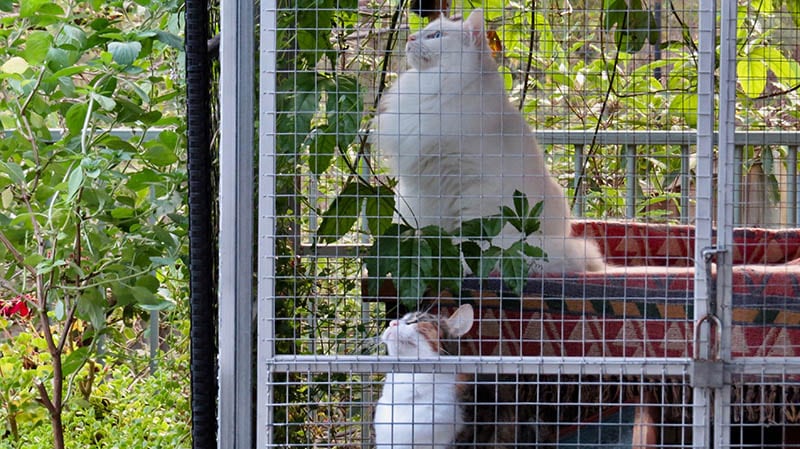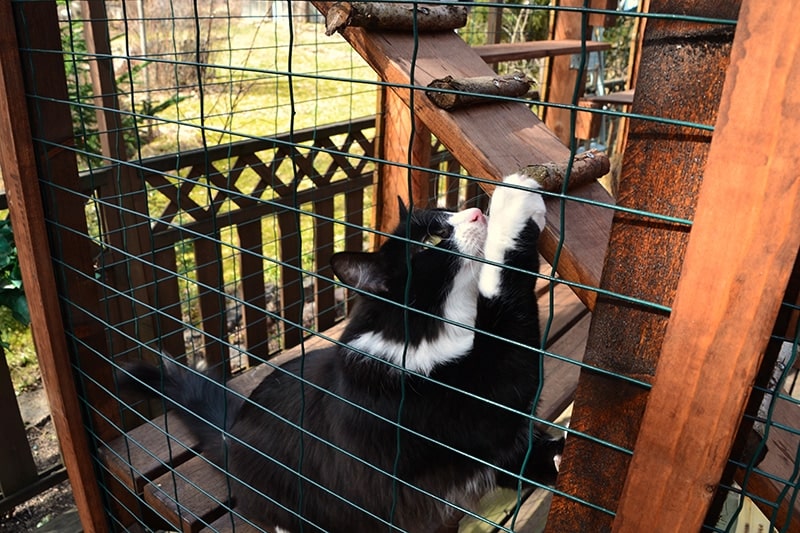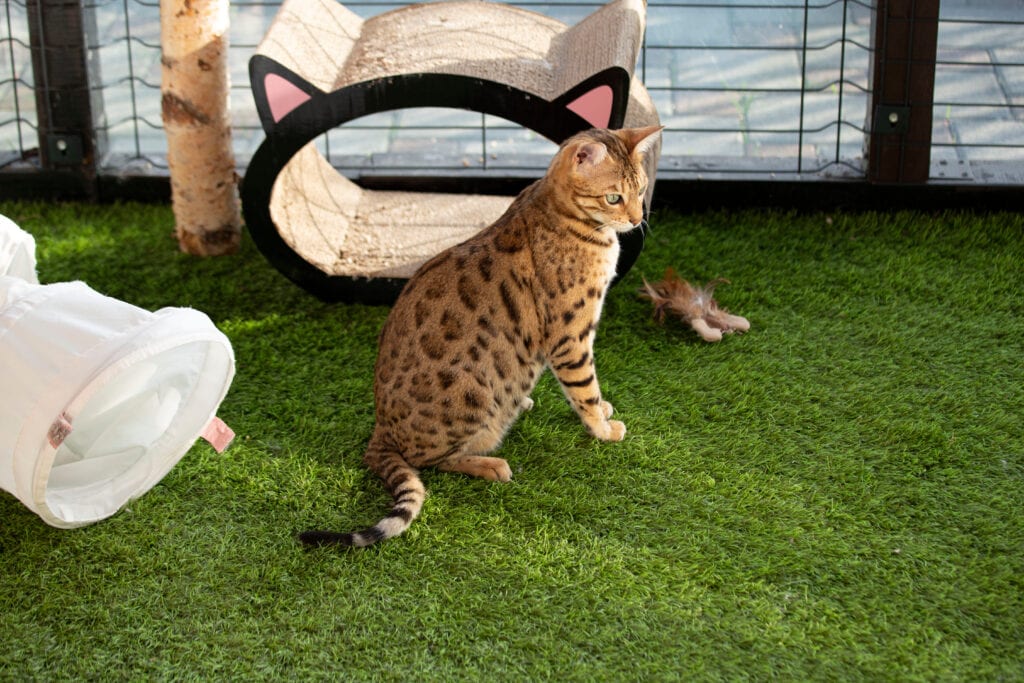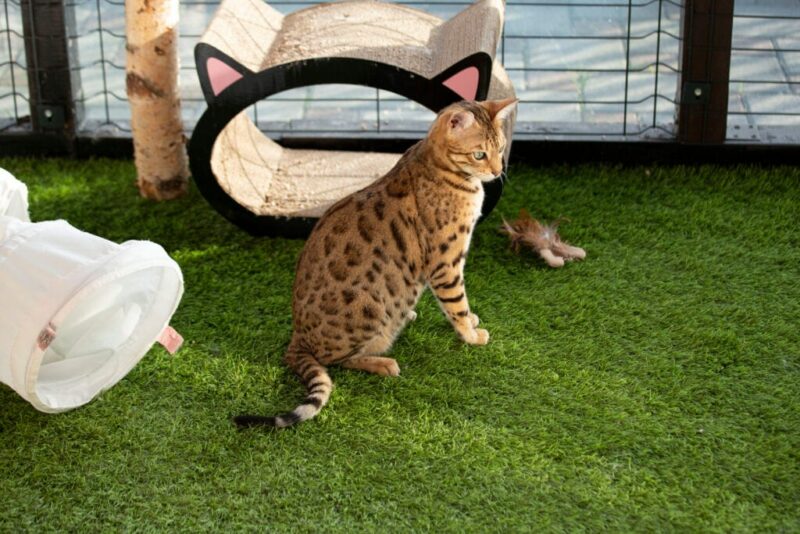Cats are curious animals that thrive on physical and mental enrichment activities. Therefore, it’s essential to incorporate fun and stimulating activities throughout their daily routine. One way to add fun to your cat’s routine and prevent boredom is to let your cat play in a catio. Catios are an excellent way to let your indoor cat spend some time outside in a safe environment. If you’re looking to add some more enriching activities to your cat’s routine, a catio may be the perfect solution.
What Is a Catio?
A catio refers to any enclosure that you can set up outside for your cat. Catios come in all shapes and sizes. Some are small enough to set up on an apartment balcony, while others are several feet tall and can be stationed in your backyard. Catios can also come with window flaps that enable your cat to go in and out of them whenever they please. Larger catios can have perches and shelves that your cat can climb onto and observe their surroundings from a higher vantage point.

The Benefits of Catios
The main benefit of catios is that they enable cats to experience the outdoors while still being within a safe environment. A high-quality catio will be durable and escape-proof. It will have bars that are lined up close together so that outside wildlife can’t enter and put your cat at risk of injury or contracting an infectious disease.
Catios provide an enriching experience for cats because they allow cats to experience the outdoor world. They’ll be able to experience new sights, smells, and sounds. Cats need a certain amount of exercise and enrichment every day to stay happy and express normal behaviors. Cats that don’t get enough exercise and mental stimulation eventually get bored, and this often leads to engaging in disruptive or destructive behaviors, like destroying furniture, and increased vocalization. Increased activity can also reduce their risk of developing medical conditions including obesity, diabetes and arthritis.
Disadvantages of Catios
There are some cases in which a catio won’t be appropriate for a cat. Cats that are particularly timid may not enjoy being inside a catio, especially if you live in a busy area with a lot of foot traffic. Some may get scared or spooked by loud noises, like motorcycles, ambulance sirens, and loud music coming from bars and restaurants.
Catios also aren’t ideal if you live in an area with cold winters. They’re not designed to withstand harsh weather. Larger catios are often a hassle to disassemble, so you’ll have to prepare yourself to dedicate time to break down a catio and store it in a safe spot every year or find a way to block it off from your cat when the weather turns too cold for them.

How to Introduce Cats to a Catio
Indoor cats may need some extra time to get used to being inside a catio. So, it’s important to take gradual steps to help your cat get comfortable. Start by choosing a quiet time of day to introduce your cat to the catio. Place your cat in their carrier and bring the carrier inside the catio. Leave the door open and allow your cat to come out on their own. You can make the catio a warmer and more inviting space by placing some of your cat’s favorite toys and treats inside it. You can also try to coax them out by leaving a bowl of food in the catio.
It may take a few tries before your cat decides to explore the catio. So, make sure not to rush your cat because this can cause them to become more timid and less interested in exploring the catio.
Conclusion
Catios provide a safe space for cats to enjoy spending some time outdoors. Some cats will love being in a catio right away, while some will take some time to get used to the experience. After some time, most cats will look forward to playing in their catio, and you and your cat can start to enjoy being outdoors together more frequently.
Featured Image Credit: TheCats, Shutterstock













